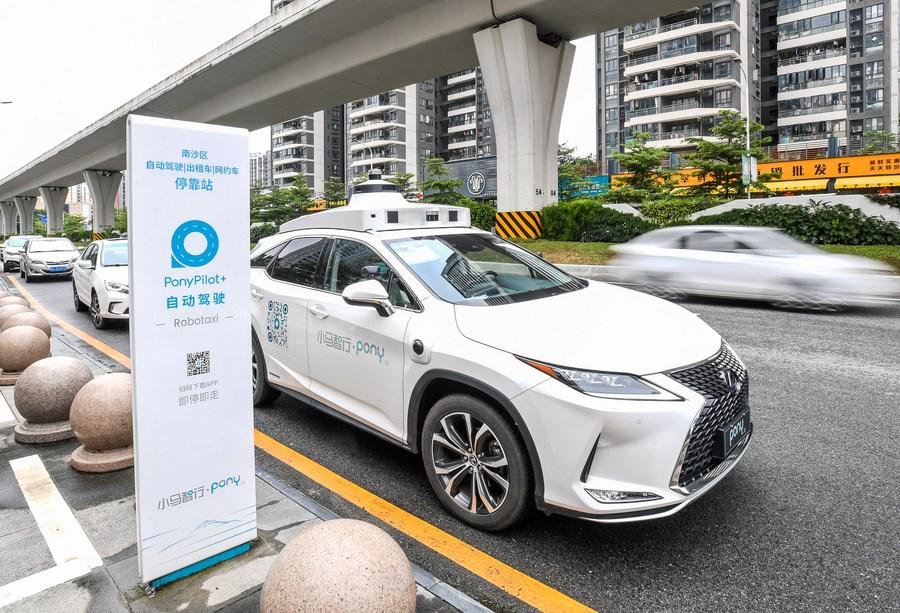The Ministry of Natural Resources of China has recently released a guideline that outlines the construction of a standard system for intelligent-vehicle basic maps. This document will act as a guide to standardize these maps based on five main aspects. The first aspect is general application, which focuses on making these maps accessible to all users regardless of their location or device. The second aspect is production updates, which will ensure that these maps are updated regularly to reflect changes in road infrastructure and traffic patterns.
The third aspect of the guideline is application service, which outlines the need for reliable and efficient services that allow users to access these maps easily. This will involve the use of advanced technology such as Artificial Intelligence (AI) and cloud computing to improve the overall user experience. The fourth aspect is quality detection, which will ensure that the maps meet a certain standard of quality. This will involve rigorous testing and quality control measures to ensure that the maps are accurate and reliable.
The guideline focuses on safety management, which is of utmost importance when it comes to intelligent-vehicle basic maps. The safety management aspect of the guideline aims to ensure that the maps are not only accurate but also safe for use by all road users. This will involve the use of safety protocols, such as real-time data analysis and monitoring, to ensure that the maps are always up-to-date and that any potential safety issues are identified and resolved in a timely manner.
The release of this guideline is a significant development in the field of intelligent-vehicle basic maps. With the standardization of these maps, users can expect a more reliable and efficient experience when navigating roads and highways. The use of advanced technology, such as AI and cloud computing, will also help to improve the overall quality of these maps, making them an essential tool for all road users.
The promotion of coordinated development of maps and geographic information, along with several other industries, has been a crucial aspect of recent technological advancements. These industries include automobile, information and communication, electronics, transportation, information security, password, and more. By coordinating the development of these industries, it is possible to create a more holistic and efficient system that benefits society as a whole.
One of the primary goals of this coordinated development is the formation of a standard system of intelligent-vehicle basic maps. These maps are designed to meet the needs of the country’s technological and industrial development. As the use of intelligent vehicles becomes increasingly common, it is essential to have a reliable and consistent system of mapping and geographic information. This will ensure that intelligent vehicles can operate safely and effectively in all parts of the country.
The development of these intelligent-vehicle basic maps also involves a significant emphasis on technological advancements. As new technologies are developed, they can be integrated into the mapping and geographic information systems, making them more accurate and efficient. This, in turn, will lead to a more advanced system that can benefit a wide range of industries, including transportation, logistics, and more.
The promotion of coordinated development of maps and geographic information, along with several other industries, is an essential aspect of modern technological advancements. The development of a standard system of intelligent-vehicle basic maps is just one example of how this coordination can benefit society as a whole. By focusing on technological advancements and integrating new technologies into the system, it is possible to create a more advanced and efficient system that can benefit a wide range of industries.
The development of intelligent-vehicle technology has brought about the need for standardized basic maps that can be used across different platforms. To achieve this, a new guideline has been proposed, which recommends the development of over 10 standards for intelligent-vehicle basic maps. These standards will cover technical requirements and specifications such as basic general application and data.
The proposal for the development of standardized basic maps is a significant step towards the integration of intelligent-vehicle technology. It is aimed at ensuring that the various platforms that use this technology can seamlessly communicate with each other. With the development of more than 10 standards, the basic maps can be utilized in different applications, regardless of the technical requirements of the platform. This will not only save time and resources but will also increase the efficiency of the technology.
The proposed guideline for the development of intelligent-vehicle basic maps is expected to have a significant impact on the future of transportation. With the standardization of basic maps, the development and implementation of intelligent-vehicle technology can be accelerated. The adoption of this technology will lead to safer and more efficient transportation systems, reducing accidents and traffic congestion. Furthermore, the development of intelligent-vehicle technology will create new job opportunities and have a positive impact on the economy.
China is set to become a leader in the development of intelligent-vehicle technology with the implementation of new guidelines. One of the key initiatives is the establishment of a standard system for intelligent-vehicle basic maps to support autonomous driving. According to the guideline, this system is expected to be in place by 2025.
The development of a standard system for intelligent-vehicle basic maps is a critical component in the implementation of autonomous driving technology. With the establishment of a unified system, intelligent-vehicle technology can be integrated seamlessly, regardless of the platform. This will pave the way for the development and implementation of intelligent-vehicle technology, making driving safer, more efficient, and more environmentally friendly. The proposed timeline of 2025 demonstrates China’s commitment to the development and implementation of intelligent-vehicle technology, which is expected to have significant economic and social benefits.
Read More:
